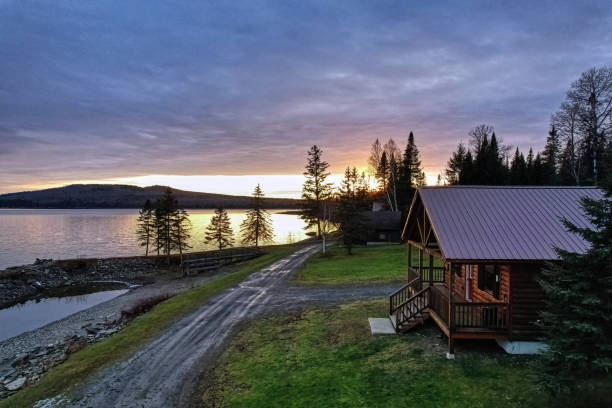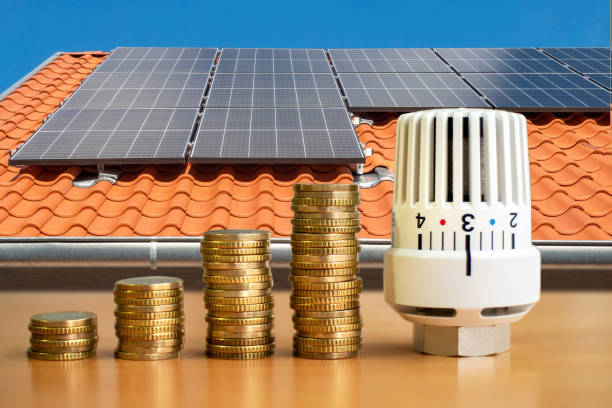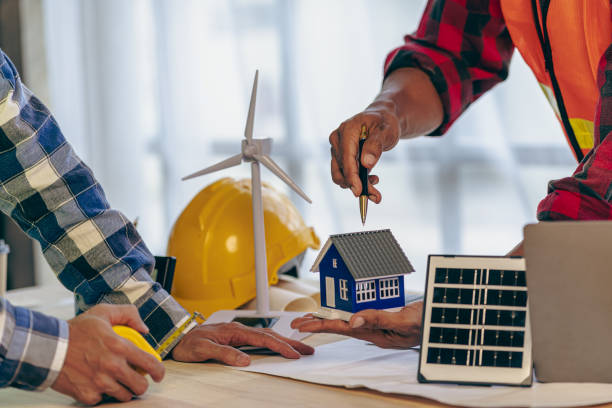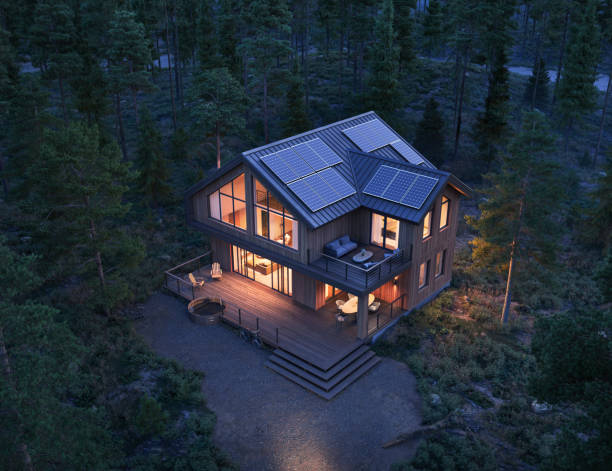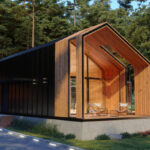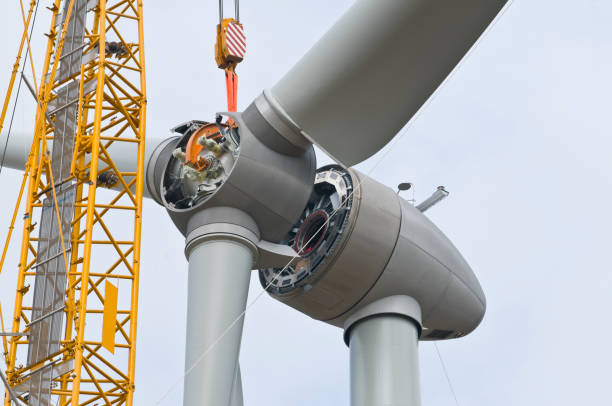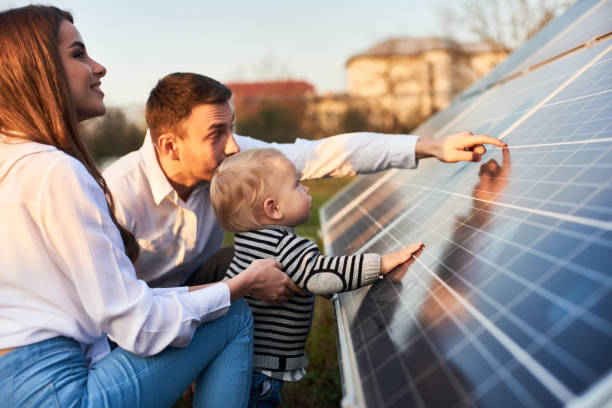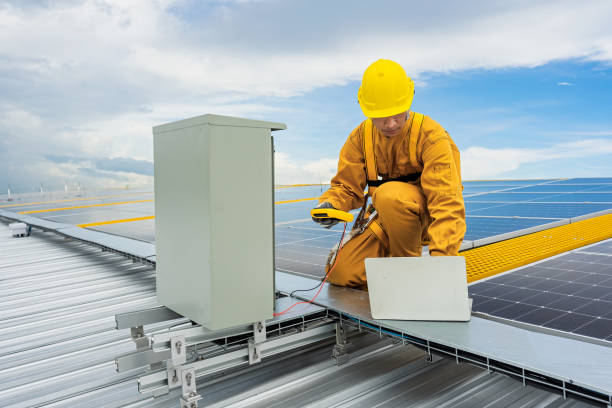Solar Power for Off Grid Cabins
This post contains affiliate links. I may earn a commission at no extra cost to you if you make a purchase. Note that I’m not a health or outdoor safety professional, so further research is advised. Your support keeps Outdoors A-Z running—thank you! Read the full disclosure.. Read the full disclosure here.
Off-grid cabins, nestled in the heart of nature, offer a tranquil escape from the hustle and bustle of urban life. These rustic retreats, often hidden amidst towering trees or perched on the edges of serene lakes, provide a unique lifestyle experience. Yet, this idyllic setting comes with its own set of challenges, the most significant being the provision of reliable power. Traditional grid-based electricity is usually out of reach in these remote locations, making off-grid cabins the perfect candidates for harnessing the power of the sun: solar energy.
In this blog post, we will delve deep into the world of solar power for off-grid cabins. We’ll explore the intricacies of off-grid living, the basics of solar energy, and how to design and install a solar power system tailored to the unique needs of cabins in remote locations.
Table of Contents
Understanding Off-Grid Cabins
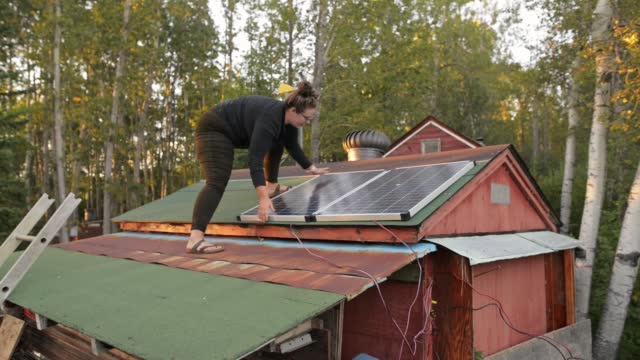
Living off the grid is a lifestyle choice that offers unparalleled freedom and self-sufficiency. Off-grid cabins, far removed from urban infrastructure, rely on alternative energy sources, such as solar power, to meet their electricity needs. But why do people choose this path, and what challenges do they face in their pursuit of a more sustainable and independent lifestyle?
Defining Off-Grid Living
Off-grid living involves disconnecting from municipal utilities, including electricity, water, and sewage systems. Instead, off-grid cabins generate their own power, harvest rainwater, and often employ composting toilets and other eco-friendly solutions. This deliberate choice to live off the grid is driven by a variety of reasons, including a desire for environmental sustainability, reducing one’s ecological footprint, and embracing a simpler, more self-reliant way of life.
Energy Needs of Off-Grid Cabins
Off-grid cabins, though free from the constraints of city life, still require energy to power essential appliances and maintain a comfortable living environment. These energy needs typically include lighting, refrigeration, cooking appliances, heating, and sometimes air conditioning. Each of these demands careful consideration, as energy usage must be optimized to match the capacity of the off-grid power system.
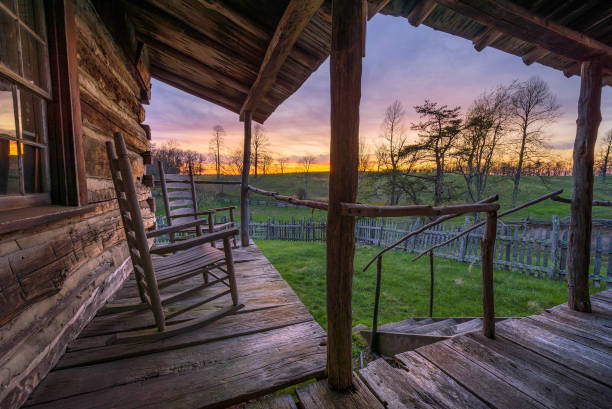
In addition to day-to-day energy needs, off-grid cabins often require additional power for specific activities, such as operating power tools for maintenance, running water pumps, or charging electronic devices. Managing these diverse energy requirements is essential to ensure a consistent power supply without overburdening the solar energy system.
Introduction to Solar Power
The concept of harnessing the sun’s energy to power our homes and businesses is not new, but recent advancements in solar technology have made it more efficient, reliable, and accessible than ever before. Solar power, also known as photovoltaic (PV) power, is generated by converting sunlight into electricity using solar panels. This clean and renewable energy source has become a cornerstone of sustainable living, especially for off-grid cabins seeking independence from traditional power grids.
How Solar Power Works
At the heart of a solar power system are solar panels, which consist of many photovoltaic cells made from semiconductor materials like silicon. When sunlight strikes these cells, it excites electrons, generating a direct current (DC) electricity flow.
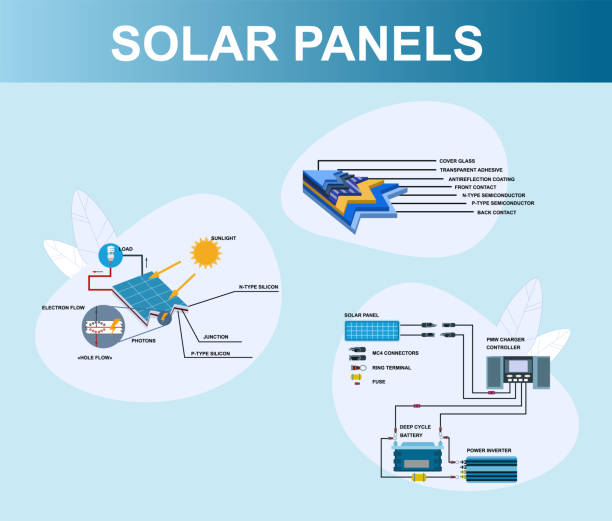
An inverter then converts this DC electricity into alternating current (AC), which is the standard electrical format used in homes and businesses. This AC electricity can power lights, appliances, and other electrical devices in your off-grid cabin.
Components of a Solar Power System
Solar Panels:
Solar panels are the primary components that capture sunlight and convert it into electricity. They come in various sizes and types, with monocrystalline and polycrystalline panels being the most common for residential use.
Batteries:
Solar power systems for off-grid cabins require batteries to store excess energy generated during sunny days. These batteries store the energy for use during cloudy periods or at night when the sun isn’t shining.
Inverter:
The inverter plays a crucial role in a solar power system by converting the DC electricity generated by the solar panels into AC electricity that can be used to power your cabin.
Charge Controllers:
Charge controllers regulate the flow of electricity between the solar panels and the batteries, preventing overcharging and prolonging the lifespan of the batteries.
Advantages of Solar Power
Embracing solar power for your off-grid cabin offers numerous benefits:
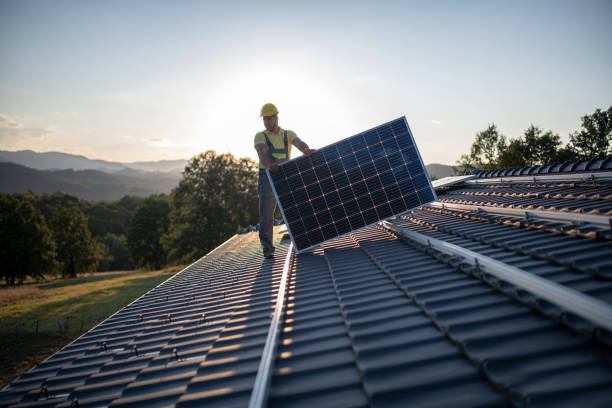
Environmentally Friendly:
Solar power is a clean and renewable energy source, producing no greenhouse gas emissions and reducing your carbon footprint.
Energy Independence:
By generating your own electricity, you free yourself from reliance on external power grids, ensuring a consistent energy supply even in remote locations.
Cost Savings:
While the initial investment can be significant, solar power systems often pay for themselves over time through reduced electricity bills and potential government incentives or rebates.
Designing a Solar Power System for Off-Grid Cabins
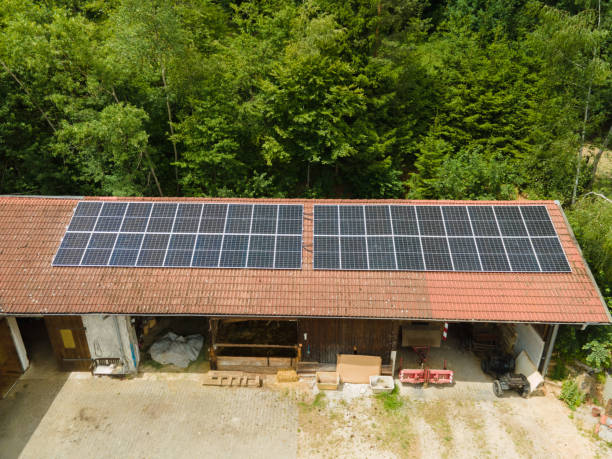
Designing an effective and reliable solar power system for your off-grid cabin requires careful planning and consideration of various factors. To create a system that meets your energy needs and provides consistent power, you’ll need to assess your electricity requirements, select the right solar panels and batteries, choose appropriate inverters and charge controllers, and implement a maintenance plan to ensure long-term efficiency. Let’s explore the key steps involved in designing a solar power system tailored to off-grid cabins.
Assessing Energy Needs
The first step in designing a solar power system is determining your cabin’s energy requirements. Make a list of all the appliances and devices you plan to power, along with their wattage and the number of hours they will be used each day.
Consider not only the essentials like lighting and refrigeration but also any additional loads, such as water pumps, laptops, or power tools. This assessment will help you calculate your daily energy consumption in kilowatt-hours (kWh), which is crucial for sizing your solar power system correctly.
Selecting Solar Panels and Batteries

Solar Panels:
Choose high-quality solar panels that offer the right balance between efficiency, size, and cost. Monocrystalline panels are more efficient and space-efficient, making them a popular choice for off-grid applications. Consider the available space on your cabin’s roof or property when determining the number and size of panels needed to generate enough electricity.
Batteries:
Select deep-cycle batteries designed for solar power systems. Lead-acid batteries are common and cost-effective, but newer technologies like lithium-ion batteries offer higher energy density and longer lifespan, albeit at a higher initial cost. Properly size your battery bank to store surplus energy generated during sunny days, ensuring a steady power supply during periods of low sunlight.
Inverters and Charge Controllers
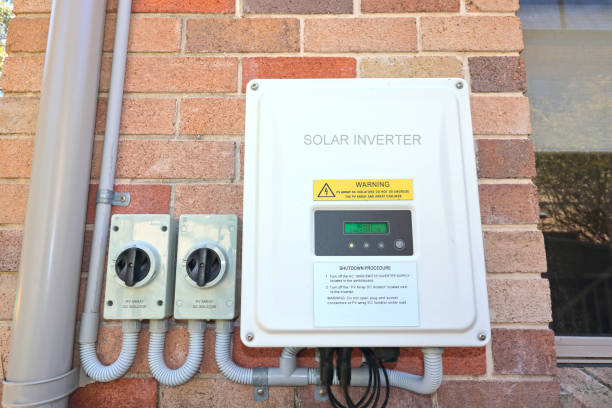
Inverters:
Choose an inverter that can handle the peak load of your cabin and convert DC electricity from the batteries into usable AC electricity. Pure sine wave inverters provide clean and stable power, making them suitable for sensitive electronic devices.
Charge Controllers:
Opt for a charge controller that matches the voltage of your solar panels and batteries. Charge controllers prevent overcharging and ensure the batteries are charged efficiently. Consider MPPT (Maximum Power Point Tracking) controllers, which maximize energy harvest by optimizing the voltage and current from the solar panels.
System Maintenance and Monitoring
Regular maintenance is essential to keep your solar power system operating at peak efficiency. Develop a maintenance schedule that includes cleaning the solar panels, inspecting connections, and checking the battery bank’s state of charge. Implement a monitoring system to track your energy production and consumption, allowing you to identify any issues promptly and optimize your energy usage.
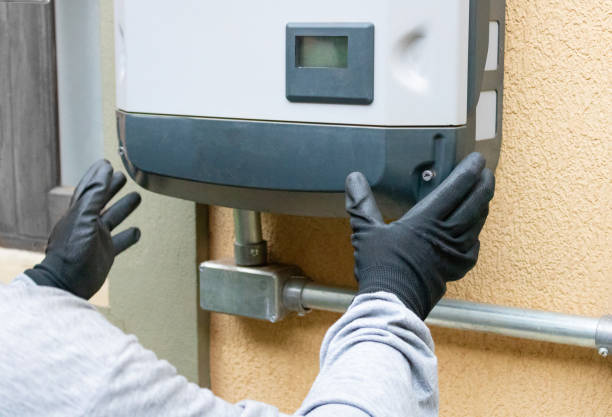
By carefully considering these factors and components, you can design a solar power system that not only meets your off-grid cabin’s energy needs but also provides a reliable and sustainable source of electricity.
Installation Process
Installing a solar power system for your off-grid cabin is a hands-on process that requires careful planning, attention to detail, and a focus on safety. While the specific steps can vary based on the system design and the unique characteristics of your cabin, the following guidelines will help you navigate the installation process effectively.
Site Assessment: Choosing the Right Location
Start by assessing your cabin’s surroundings to identify the best location for installing solar panels. Ideally, choose a spot with maximum sunlight exposure throughout the day, free from shading by trees or nearby structures. South-facing rooftops or open areas on your property are often the best options. Consider the tilt angle of the solar panels to optimize energy capture based on your geographical location.
Mounting Solar Panels
Securely mount the solar panels on a stable structure, such as the cabin’s roof or a ground-mounted frame. Ensure that the mounting system is robust and can withstand weather conditions specific to your region, including wind, snow, and rain. Follow the manufacturer’s guidelines and local building codes for proper installation. Use waterproof seals and brackets to prevent water leakage and ensure the longevity of your solar power system.
Connecting Batteries and Inverters

Install the deep-cycle batteries in a well-ventilated and secure location, protecting them from extreme temperatures and moisture. Connect the batteries to the charge controller and the inverter, following the wiring diagram provided by the manufacturers. Pay careful attention to the polarity and ensure all connections are tight and secure. Install fuses and disconnect switches for added safety, allowing you to isolate the system during maintenance or emergencies.
Wiring the System
Carefully route the wiring from the solar panels to the charge controller and then to the batteries and inverter. Use appropriate gauge wires and connectors to minimize energy losses and maximize efficiency. Protect the wiring against physical damage and exposure to the elements by using conduit and cable trays. Properly ground the system according to local electrical codes to ensure safety.
Safety Precautions
During the installation process, prioritize safety at all times. Work with a partner if necessary, and use appropriate personal protective equipment, including gloves and safety glasses. Avoid working on the system during inclement weather, and always follow electrical safety guidelines. If you’re not confident in your electrical skills, consider hiring a professional installer to ensure a safe and compliant installation.
System Testing and Commissioning
After completing the installation, thoroughly test the solar power system to ensure it functions as intended. Check the voltage, current, and power output of the solar panels under different sunlight conditions. Verify that the batteries charge properly and that the inverter produces stable AC electricity. Monitor the system for a few days to confirm its reliability and make any necessary adjustments.
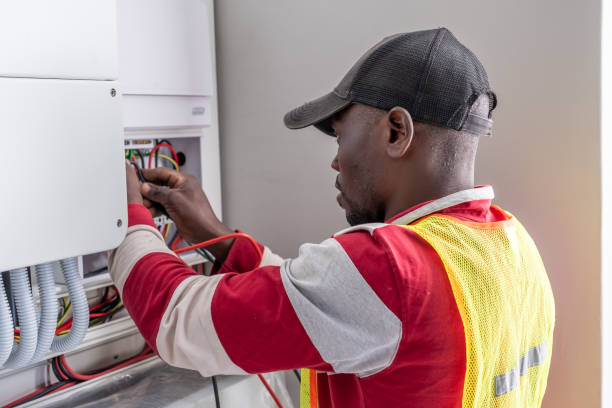
By following these steps and adhering to safety protocols, you can successfully install a solar power system for your off-grid cabin. With your system up and running, you’ll enjoy the benefits of clean, renewable energy, powering your cabin and providing a sustainable solution for your off-grid lifestyle.
Living with Solar Power
Congratulations on successfully installing your solar power system! Now that your off-grid cabin is powered by the sun, it’s essential to manage your energy usage effectively and be prepared for various scenarios to make the most of your solar setup.
Managing Energy Usage
One of the keys to a sustainable off-grid lifestyle is conscious energy management. Consider investing in energy-efficient appliances and LED lighting to minimize electricity consumption. Implement simple habits like turning off lights and appliances when not in use and optimizing heating and cooling systems for energy savings. Being mindful of your energy usage ensures that your solar power system can meet your needs without strain.
Dealing with Cloudy Days and Low Sunlight
While solar power is reliable, it’s crucial to have a plan for periods of limited sunlight. Cloudy days or seasons with less sunlight can impact your energy production. To mitigate this, invest in a sufficient battery storage capacity to store excess energy during sunny days, providing a reserve for cloudy days.
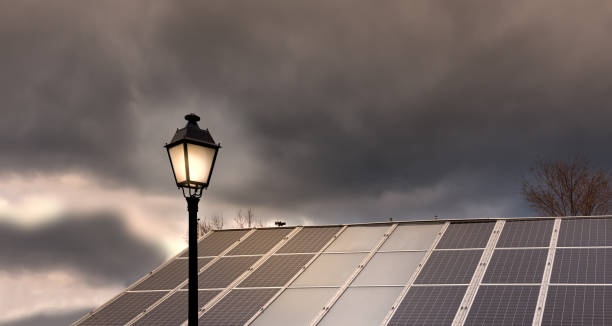
Additionally, consider alternative power sources, such as a backup generator or wind turbine, to supplement your solar system during extended periods of low sunlight.
Upgrading and Expanding Your Solar Power System
As your energy needs evolve or new technologies emerge, you might want to upgrade or expand your solar power system. Stay informed about advancements in solar technology, battery storage, and energy management systems. Upgrading your solar panels or batteries can enhance your system’s efficiency and storage capacity, allowing you to power additional appliances or expand your cabin.
Regular Maintenance and Monitoring
Regular maintenance is vital to ensure the longevity and efficiency of your solar power system. Schedule routine checks to clean the solar panels, inspect wiring and connections, and monitor battery health. Implement a monitoring system that tracks your energy production and consumption in real-time. Monitoring allows you to identify any issues promptly and optimize your energy usage patterns, maximizing the benefits of your solar setup.
Embracing Energy Conservation Lifestyle
Living off the grid is not just about generating renewable energy; it’s also about embracing a sustainable lifestyle. Consider incorporating energy conservation practices into your daily routine, such as using natural daylight whenever possible, drying clothes outdoors, and utilizing efficient cooking methods. These practices not only reduce your energy usage but also enhance your overall off-grid experience.
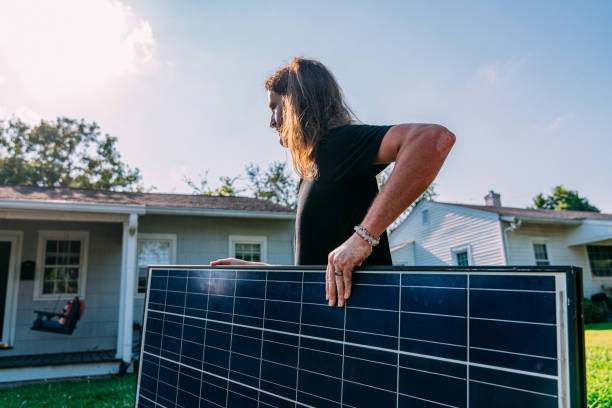
By managing your energy usage, planning for periods of low sunlight, staying updated with technology, and adopting an energy-conscious lifestyle, you can fully enjoy the benefits of living with solar power. Your off-grid cabin will not only be powered by the sun but also serve as a testament to sustainable living, inspiring others to embrace renewable energy solutions.
Conclusion
In the serene embrace of nature, off-grid cabins powered by solar energy represent more than just a lifestyle choice; they embody a commitment to environmental stewardship, self-sufficiency, and a profound connection to the Earth.
May your off-grid cabin continue to stand as a beacon of eco-friendly living, inspiring others to embrace the sun’s energy and tread lightly on this magnificent planet we call home. With solar power illuminating your path, your off-grid adventure is not just a retreat into nature but a harmonious dance with the elements, guided by the brilliance of the sun.

